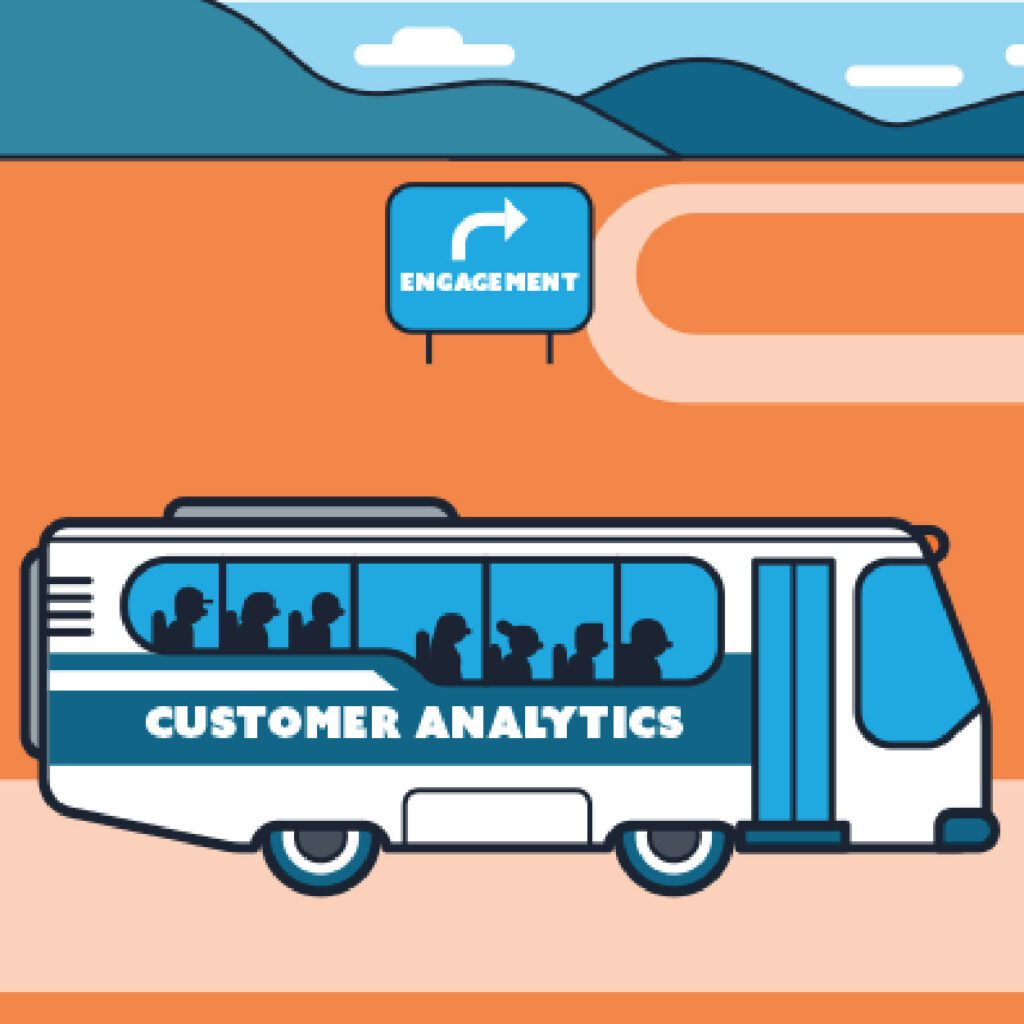How Hyper-Personalization Helps Build Loyal Customer Relationships
June 14, 2019Businesses and brands have always strived to segment and target their customers to be able to adapt their communication to the exact client needs. With the advent of the digital era, the customer segmentation is now undergoing an enormous transformation.
Today, it’s the age of hyper-personalization, a paradigm shift in the marketing industry that’s made the biggest businesses sit up and take notice. Hyper-personalization demands pushing the boundaries of personalization to an individual level and adapting functionalities and interactions in real time to offer each and every customer a truly unique experience that delights them and keeps them coming back for more.
For effective hyper-personalization, customer data is a prerequisite and rightly so, since it is one of the industry’s most valuable assets. So, what do customer satisfaction, customer loyalty, and hyper-personalization have in common, you may ask. Well, everything.
How does data help with hyper-personalization?
True one-to-one personalization requires a lot of data about every aspect of customer behavior. Mature brands have been pushing the envelope with hyper-personalization thanks to the help of advanced data management and data-driven marketing. And, this is exactly where a good Customer Data Platform (CDP) steps in to take over the reins. It is the Customer Data Platform that processes large amounts of information flows, analyzes this data and converts it into actionable insights that can be utilized by marketers to tactically anticipate a customer’s needs. Personalizing your business’s communication and campaigns can mean making or breaking a brand. Today’s consumers are tech-savvy and demand experiences that are relevant to their requirements, making hyper-personalization one of the best marketing investments you can make.
Gartner predicts that over 50% of companies will redirect investments towards customer experience innovations in 2018.
What’s more, today’s customers are comfortable, to a certain extent, with their favorite brands knowing their individual information, such as product and personal preferences so they can enjoy a tailored experience crafted specifically for them. Customers also value their time, and pre-set buyer journeys allow them to get to their destination faster. This means organizations can use data to hyper-personalize experiences, albeit with customer consent where needed.
How does hyper-personalization help achieve customer satisfaction and drive revenue?
Research supports hyper-personalization, with studies stating that reaching out to a customer personally drives engagement, brand loyalty and therefore, revenue. For instance, studies by VentureBeat displayed results that a simple change such as using a customer’s name in emails pushed the email open rate up 29.3 percent on average. The same study also stated that websites using personalization drove up their page views as well as conversion rate by a large percentage.
Once you segment your customers using behavioral data, you can understand each segment and tweak its respective buyer journey. This is easily achieved by a CDP that integrates data from multiple channels, online and offline. Marketers can study these segments, and the results can then be utilized to create a number of micro-segments, which can then be used to personalize journeys further, much to the customer’s delight.
By focusing on defining your customers, their preferences, issues and challenges, you can access intricate details about the pain points in their purchasing journeys and find out what exactly it is that affects their buying decisions.
Now that you have the capability to listen as a business, you automatically have the means to respond based on the intentions of a customer. For example, if a customer has abandoned their cart after adding products to it, you can deliver a relevant and timely communication with a form of incentivization, like a discount, which can then act as a trigger to the targeted customer. The best part about all this? It’s all automated, thanks to an effectively plugged in CDP.
What is big data’s role in hyper-personalization?
A large number of businesses manage to personalize their communication and product offerings; however, there are many companies who continue to struggle to scale and seamlessly stitch data across multiple channels. This is where technology has a vital role to play, and big data is what helps marketers tie it all together.
To put it simply, hyper-personalization can only be achieved through advanced analytics as this is precisely what allows businesses to react and reach out to customers individually and in real time. It is big data that holds the key to understanding the customer, their personality, attitudes, geographic locations and other underlying factors that can offer marketers the ability to drive personalization in an omni-channel and digitally connected environment.
Big data means nothing if not used correctly. The benefits need to be translated to the consumer and consequently, to the brand. According to McKinsey, personalization can reduce acquisition costs by as much as 50%, lift revenues by 5-15%, and increase the efficiency of marketing spend by 10-30%.
What are the challenges to hyper-personalization?
Well-thought-out customer personalization requires businesses to redefine their strategies to optimize results. A business serious about taking advantage of personalization needs to understand the state of their industry and build the required technological capabilities that support it.
One of the biggest challenges marketers face when it comes to personalizing customer journeys is gleaning relevant information fast enough. CDP steps in here with the help of Artificial Intelligence and Machine Learning to tackle this challenge head on.
Another challenge often faced by businesses is the security and compliance required to manage large amounts of data entrusted by customers to the company. Today, consumers are open to trading their personal information for free or improved services which leads to a large amount of Personally Identifiable Information (PII) data that your business is directly responsible for securing. Adding to this is the IoT (internet of things) and its hyper-connected nature, which can turn out to be a real security nightmare. With a CDP, businesses can control what data is accessed by whom, leading to better governance of data, leading to increased data security.
So, there you have it; to conclude, hyper-personalization doesn’t have to feel like a daunting and overwhelming undertaking that requires big bucks to implement. Successful businesses often begin small, creating a big impact quickly in the Martech ecosystem. Taking the time to incorporate a CDP into your business process will reap your organization awards in the short and long run.
Want to learn how other organizations are building their CDP? Reach out to me at cdp@hgsdigital.com.


